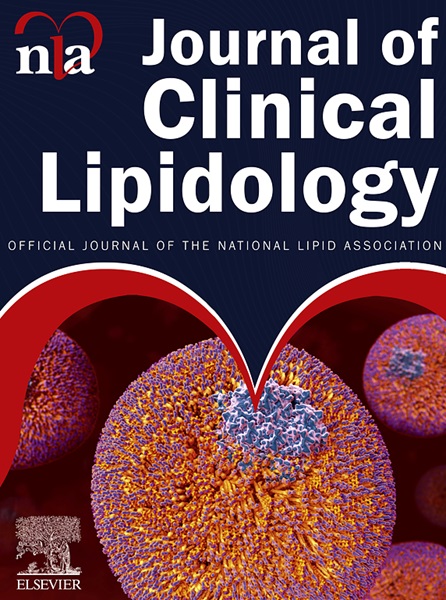Identification of a homozygous variant in ABCG5 by panel sequencing in a Pakistani family with sitosterolemia: Genotype-phenotype correlation and management considerations
IF 3.6
3区 医学
Q2 PHARMACOLOGY & PHARMACY
引用次数: 0
Abstract
Sitosterolemia is a rare autosomal recessive disorder characterized by impaired excretion of plant sterols, leading to their accumulation in tissues and organs. We identified a hitherto unreported homozygous variant, in ATP-binding cassette sub-family G member 5 (ABCG5) (NM_022436.3) c.274A > G p.(Lys92Glu), segregating in two affected siblings (Sit1C and Sit1F) of a consanguineous Pakistani family, during genetic workup for hereditary hemolytic anemia. Both patients had anemia, history of gum bleeding and easy bruising. Peripheral film revealed stomatocytes and macrothrombocytopenia. Plasma sitosterol level was found to be significantly high (27.7 mg/dL and 25.1 mg/dL for Sit1C and F, respectively), confirming diagnosis of sitosterolemia in both patients. Treatment with ezetimibe, a sterol absorption inhibitor, resulted in significant decrease in sitosterol as well as low-density lipoprotein-cholesterol, in these patients. This study confirms the potential of panel sequencing as a diagnostic tool for sitosterolemia. Definitive diagnosis has significant clinical implications for genetic counseling and management strategies, such as dietary modifications and successful management with ezetimibe.
在一个巴基斯坦坐骨神经油血症家族中,通过面板测序鉴定出 ABCG5 的一个同源变体:基因型与表型的相关性及管理注意事项。
植物甾醇血症是一种罕见的常染色体隐性遗传疾病,其特点是植物甾醇排泄障碍,导致其在组织和器官中蓄积。我们在对一个巴基斯坦近亲家庭进行遗传性溶血性贫血的基因检测时,在两个受影响的兄弟姐妹(Sit1C 和 Sit1F)中发现了一个迄今未报道过的 ATP 结合盒 G 亚家族成员 5 (ABCG5) (NM_022436.3) c.274A>G p.(Lys92Glu) 的同源变异。这两名患者都有贫血、牙龈出血和易瘀伤的病史。外周血片显示有口腔细胞和大血小板减少。血浆中的西固醇水平明显偏高(Sit1C 和 F 分别为 27.7 毫克/分升和 25.1 毫克/分升),确诊两名患者均患有西固醇血症。使用固醇吸收抑制剂依折麦布(Ezetimibe)治疗后,这两名患者的西固醇和低密度脂蛋白胆固醇均明显下降。这项研究证实了全基因组测序作为西托脂醇血症诊断工具的潜力。明确诊断对遗传咨询和管理策略具有重要的临床意义,如饮食调整和使用依折麦布进行成功管理。
本文章由计算机程序翻译,如有差异,请以英文原文为准。
求助全文
约1分钟内获得全文
求助全文
来源期刊
CiteScore
7.00
自引率
6.80%
发文量
209
审稿时长
49 days
期刊介绍:
Because the scope of clinical lipidology is broad, the topics addressed by the Journal are equally diverse. Typical articles explore lipidology as it is practiced in the treatment setting, recent developments in pharmacological research, reports of treatment and trials, case studies, the impact of lifestyle modification, and similar academic material of interest to the practitioner.
Sections of Journal of clinical lipidology will address pioneering studies and the clinicians who conduct them, case studies, ethical standards and conduct, professional guidance such as ATP and NCEP, editorial commentary, letters from readers, National Lipid Association (NLA) news and upcoming event information, as well as abstracts from the NLA annual scientific sessions and the scientific forums held by its chapters, when appropriate.

 求助内容:
求助内容: 应助结果提醒方式:
应助结果提醒方式:


